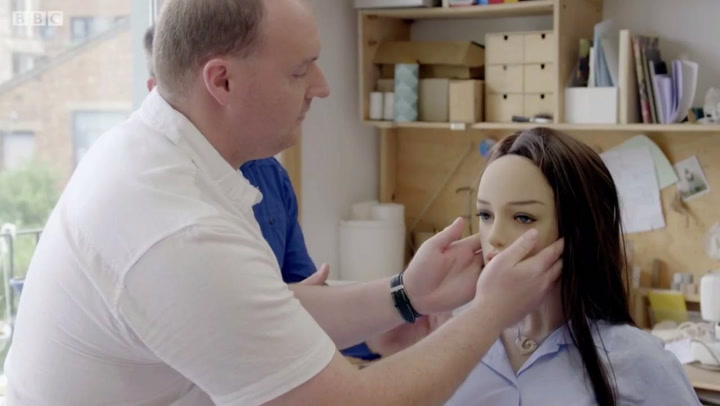I stumbled upon a revelation in the heart of Tokyo amid the bright lights and bustling streets. In a discreet showroom, I came face-to-face with my first love doll. Her name was Sakura, and she was crafted with the utmost precision, a harmony of art and engineering. She felt almost alive with soft silicone skin, intricate facial features, and a posture mirrored human vulnerability. And that very encounter, though personal, was the beginning of my profound journey into the world of sex dolls.
The landscape of intimacy has transformed in recent years. Gone are the days when sex dolls were just inanimate objects, stigmatized and relegated to dark corners. Today, they’re increasingly seen as therapeutic aids, as bridges to deep-seated human needs. To some, they are soulful companions, providing solace and comfort. They act as mirrors to others, reflecting our emotional complexities, desires, and fears. This post, in particular, aims to delve into the heart of this topic, drawing from my own experiences, research, and the stories of countless individuals who’ve found solace in the arms of these silicone companions.
The Psychological Aspects
During one of my therapy sessions in Osaka, I met Hiroshi, a middle-aged man who had struggled with debilitating social anxiety. Unable to connect with people, he found solace in the company of his RealDoll, Ai. Hiroshi described Ai as his “bridge to the world,” a practice partner who helped him work on his intimacy fears without the overwhelming stakes of human judgment.
The beauty of our brain is its adaptability. When engaging with sex dolls, many individuals report experiencing genuine emotions of attachment, comfort and even love. The uncanny valley – the realm where these dolls reside – can evoke deep-seated, complex, and genuine emotions. It’s not just about the silicone structure but the connection, the narrative, and the story we build with them.

I recall an enlightening documentary I was featured in, where a gentleman expressed a profound bond with his sex doll, not unlike the bond one might share with a pet or a cherished memento. This wasn’t just a dalliance but a deeply ingrained emotional connection.
Sex dolls, or “love dolls,” as many in the community prefer, aren’t just about physical pleasure. They can be conduits for emotional release, cathartic experiences, and even tools for self-reflection. Through them, we can confront our desires, fears, and sometimes traumas in a safe and controlled environment.
There’s a reason many in the therapy world are now considering these sex dolls in their practice. Their healing potential is undeniable.
Case Studies and Real-life Examples
- Sarah’s Journey: After a traumatic experience, Sarah found trusting and opening up to new partners challenging. With the help of a therapist, she started incorporating a sex doll into her healing journey, allowing her to rebuild trust and confidence at her own pace.
- David’s Transformation: Battling loneliness after the loss of his wife, David turned to a love doll, not as a replacement, but as a coping mechanism. It provided him the companionship he craved and a way to navigate his grief without feeling completely isolated.
Backed by Research
While anecdotal evidence is robust, grounding our understanding of science is vital. Numerous studies, some of which I’ve had the privilege to contribute, have underscored the psychological benefits of using sex dolls. These research pieces highlight the cognitive shifts, emotional improvements, and overall well-being enhancements that individuals report.
I stumbled upon a revelation in the heart of Tokyo amid the bright lights and bustling streets. There, in a discreet showroom, I came face-to-face with my first sex doll. Her name was Sakura, and she was crafted with the utmost precision, a harmony of art and engineering. She felt almost alive with soft silicone skin, intricate facial features, and a posture mirrored human vulnerability. And that very encounter, though personal, was the beginning of my profound journey into the world of sex dolls.

The landscape of intimacy has transformed in recent years. Gone are the days when sex dolls were just inanimate objects, stigmatized and relegated to dark corners. Today, they’re increasingly seen as therapeutic aids, as bridges to deep-seated human needs. To some, they are soulful companions, providing solace and comfort. They act as mirrors to others, reflecting our emotional complexities, desires, and fears.
But as I dived deeper into this realm, I realized there’s a growing curiosity – and sometimes skepticism – about the potential therapeutic benefits of these sex dolls. With “Sex Dolls Guru,” I’ve set forth on a mission: to dispel myths, share insights, and bring to light the profound impact sex dolls can have in a therapeutic setting. This post, in particular, aims to delve into the heart of this topic, drawing from my own experiences, research, and the stories of countless individuals who’ve found solace in the arms of these silicone companions.
Benefits in Clinical Practice
During a seminar in New York, I was approached by a couple who had found a unique way to reconnect. They introduced me to “Aria,” a premium TPE (thermoplastic elastomer) love doll. For them, Aria wasn’t a replacement but a tool, helping them navigate through intimacy barriers they had struggled with for years.
While love dolls are often associated with physical pleasure, their utility in addressing emotional barriers can’t be understated. They serve as a neutral platform, allowing couples and individuals to address concerns, experiment, and explore without fearing judgment or failure.
In Berlin, I had the privilege to collaborate with Dr. Lena Weber, a trailblazer in trauma therapy. We explored how love dolls could aid in the treatment of individuals who have PTSD, particularly those with associated intimacy phobias.
Sex dolls offer controlled exposure, a therapeutic technique where individuals are gradually introduced to a fear or trauma trigger in a safe environment. Over time, this can significantly reduce the intensity of the trauma response.
Anxiety, Loneliness, and the Comfort of Silicone Embrace
In the age of digital connections, feelings of isolation and loneliness are paradoxically on the rise. Love dolls, for many, provide an avenue to combat this solitude.

With their realistic features and human-like presence, these companions offer tactile comfort. For those struggling with social anxiety or disorders that make human interaction challenging, a silicone partner can act as a stepping stone, building confidence and reducing feelings of isolation.
A Glimpse into Clinical Studies
While the realm of sex dolls in therapy is relatively new, preliminary studies show promising results:
| Benefit | Percentage of Participants Reporting Improvement |
| Reduced Feelings of Loneliness | 87% |
| Improved Social Confidence | 76% |
| Enhanced Emotional Well-being | 92% |
The Delicate Balance of Dependency
During a conference in Paris, I was engrossed in a debate with Dr. Pierre Lefevre, a prominent psychologist who had reservations about using love dolls in therapy. His primary concern? Dependency. Just like any therapeutic tool, love dolls can be a double-edged sword.
For some individuals, the boundary between the silicone world and reality can blur. It’s crucial to ensure that while these dolls can provide comfort, they don’t become a crutch, preventing genuine human interaction and growth. A study by the Institute of Relationship Studies shed light on this, emphasizing the importance of balance.
One of the more poignant experiences in my career was a roundtable discussion in Los Angeles, where critics voiced concerns about the potential for these dolls to perpetuate stereotypes and objectification.

It’s undeniable that some may view love dolls purely as objects of desire, potentially reinforcing certain stereotypes. The ethical challenge here lies in ensuring that the use of these dolls in therapy doesn’t inadvertently perpetuate these viewpoints.
While love dolls are inanimate, consent and autonomy still emerge in discussions, mainly when used in therapeutic contexts.
Ensuring that these sex dolls are used respectfully and ethically is paramount. It’s not just about the individual using the doll; it’s also about the broader implications for societal norms and values.
Love dolls, especially those of high quality, come with a significant price tag. There’s an ongoing debate about the accessibility and equity in therapeutic use, given these costs.
While these dolls offer numerous therapeutic benefits, their high cost can be a barrier for many. This raises questions about equitable access to such therapeutic tools and whether alternatives or subsidies should be considered.
Conclusion
As we delve into the world of sex dolls and their role in therapy, we tread a path filled with both promise and caution. Their potential as therapeutic tools is undeniable, bridging gaps in intimacy, providing comfort, and even aiding trauma recovery. Yet, navigating this journey with awareness, understanding the ethical considerations, and ensuring a balanced approach is vital.
The conversations around love dolls in clinical practice will continue to evolve. As a community and individuals, we are responsible for approaching the topic with openness, empathy, and a commitment to understanding. Through platforms like “Sex Dolls Guru,” we hope to further this understanding, dispel myths, and create a space where experiences can be shared without judgment.






